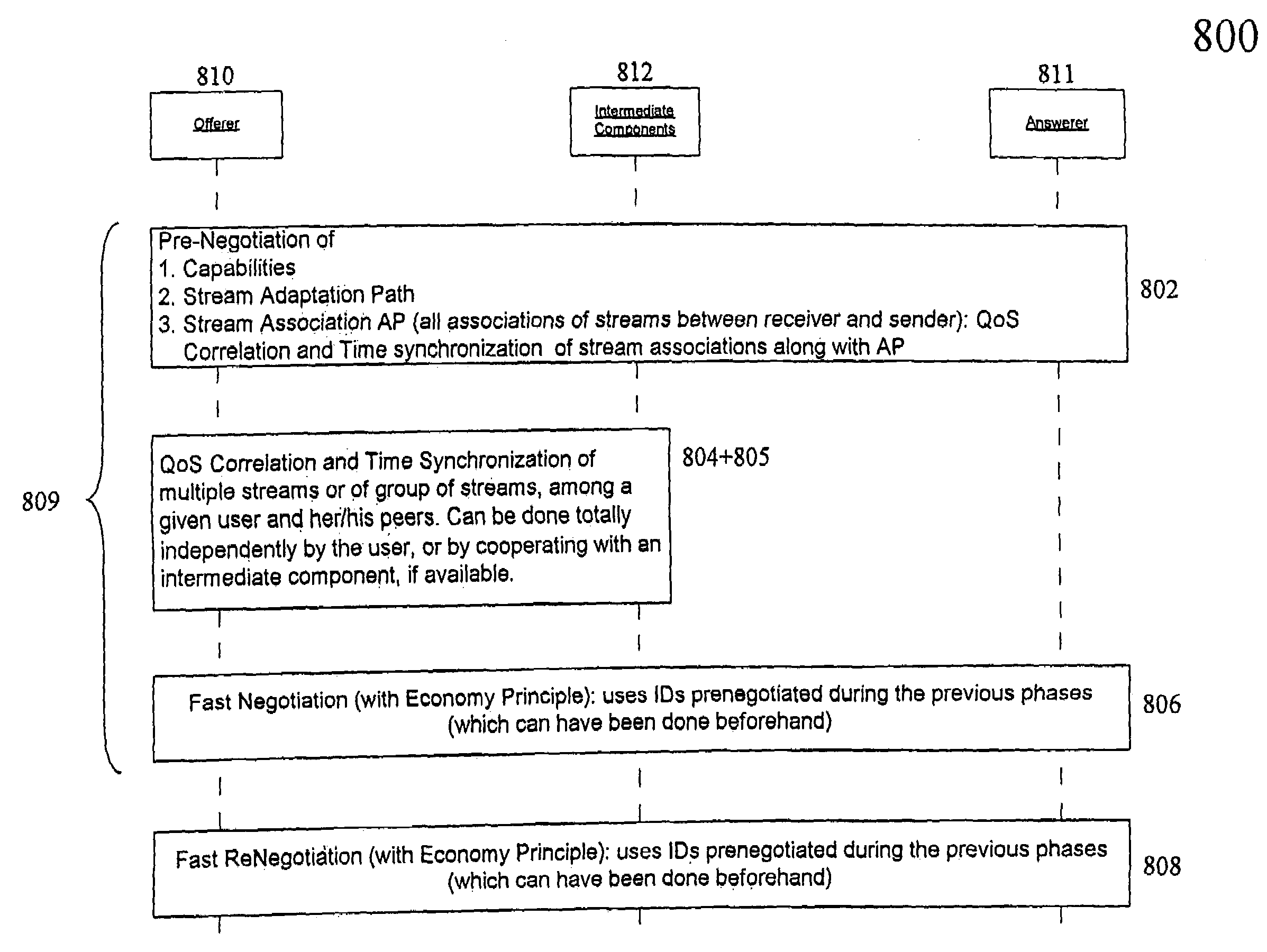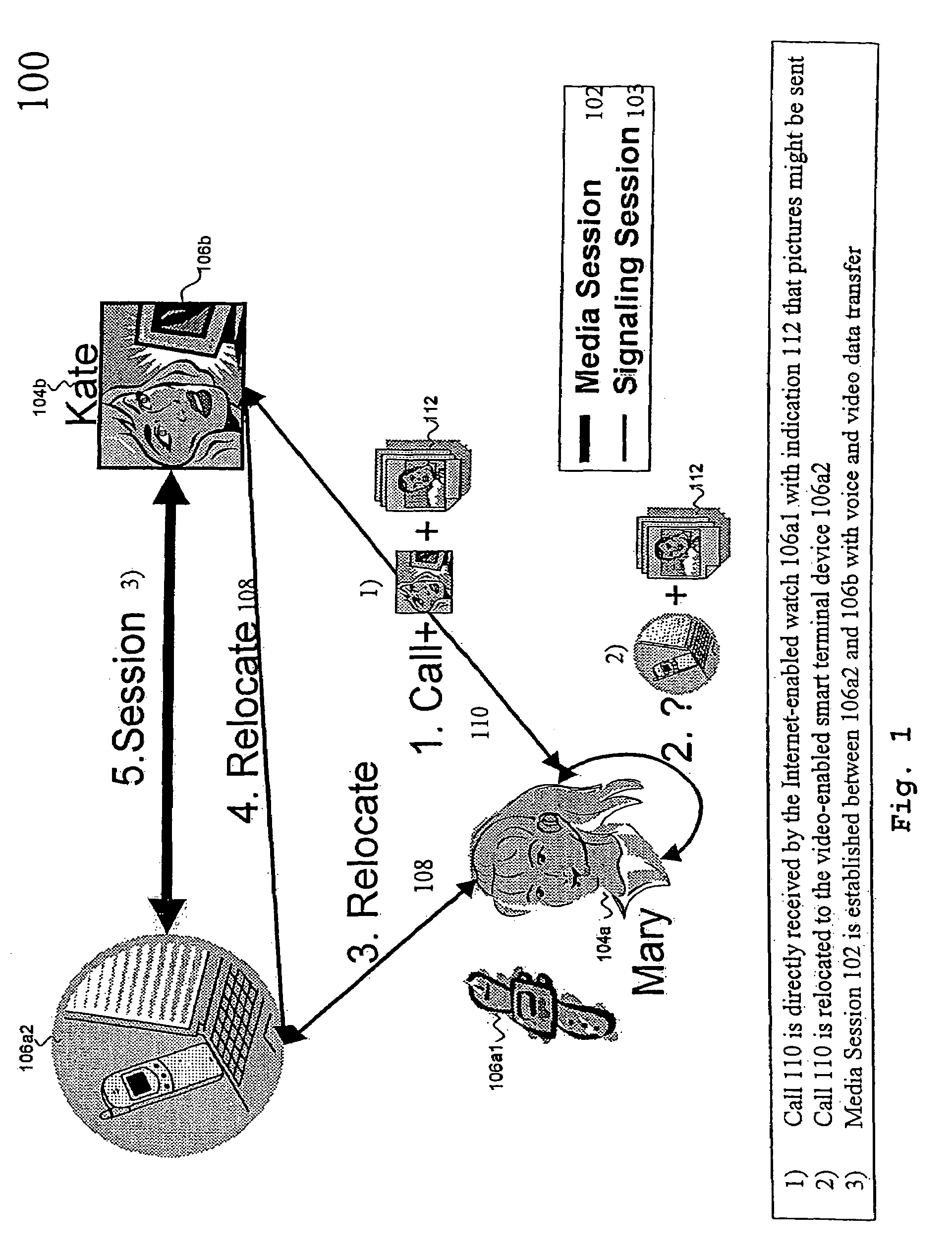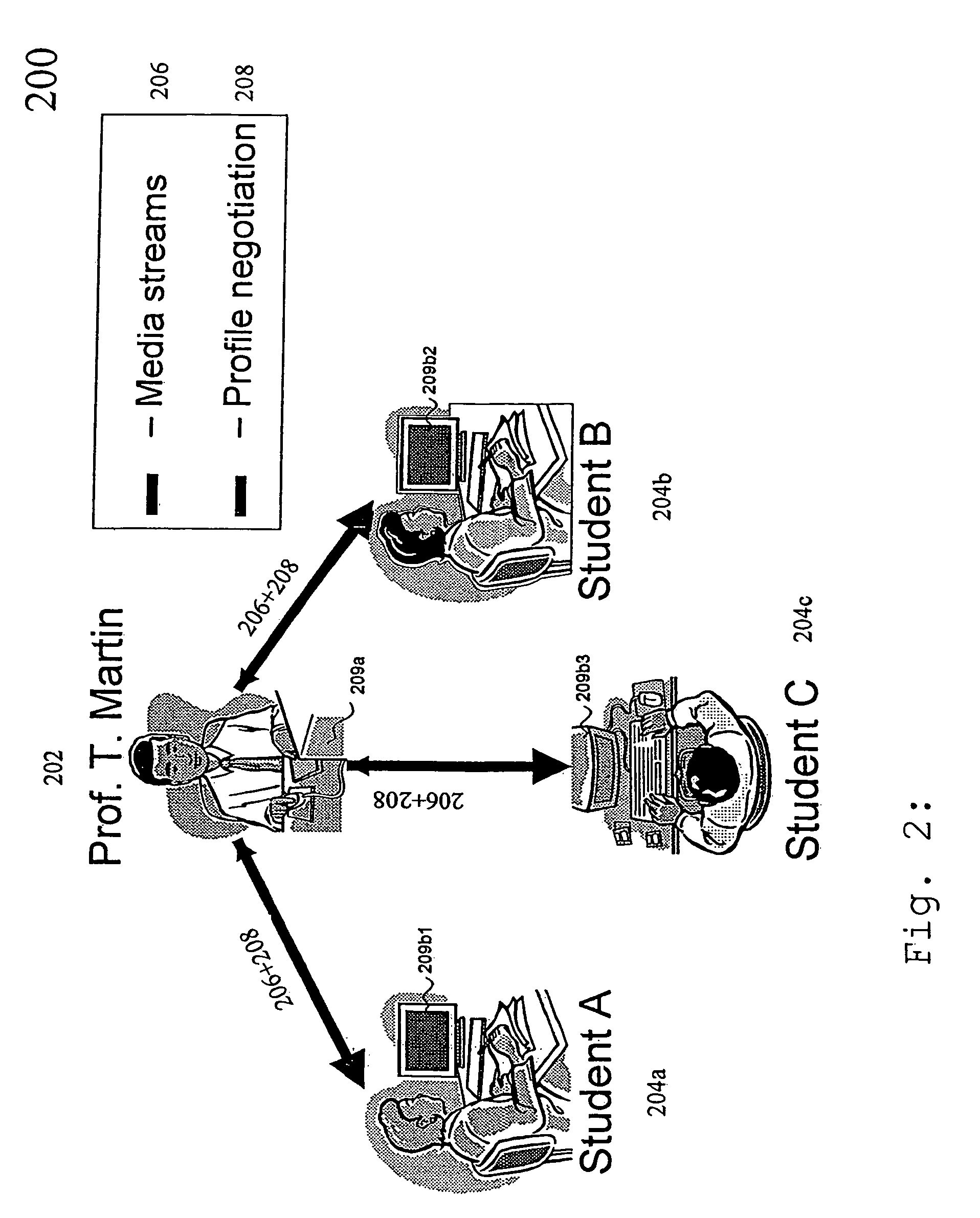Model for enforcing different phases of the end-to-end negotiation protocol (E2ENP) aiming QoS support for multi-stream and multimedia applications
a technology of end-to-end negotiation and end-to-end negotiation protocol, applied in the field of mobile computing, can solve the problems of not considering does not consider pre-negotiation of qos and the integration of local and peer resource management, and does not provide the content negotiation process
- Summary
- Abstract
- Description
- Claims
- Application Information
AI Technical Summary
Benefits of technology
Problems solved by technology
Method used
Image
Examples
example 1
XML EXAMPLE 1
[0426]In user profiles, users may specify QoS with different levels of granularities: specific target values or operative ranges, either as discrete sets or as continuous intervals. The frame-size-set indicates the size of the represented frames. It can be both specified as a standard frame-size (CIF, QCIF, SIF, etc.) or a width-height resolution in pixel (e.g. 352×288).
[0427]The frame-rate-set denotes an interval for specifying target frame rate of the peers. For example, if the frame rate is set to 20 Fr / s, the sender should be able to compress, packetise and send 20 frames per second. The receiver should be able to decode and render 20 Fr / s. Additional information the video codecs mapping with respect to the frame size can be found in “IP / TV CODECs, File Transfer and Storage Requirement Considerations” (White Paper, Jul. 2000, http: / / www. cisco.com / warp / public / cc / pd / mxsv / iptv3400 / tech / ipcod_wp.htm), in the following referred to as [WP-CISCO].
[0428]The color-quality-r...
example 2
XML EXAMPLE 2
[0431]In any case, some changes to the current SDPng proposal—including the Audio Codec and RTP profiles—defined in “Session Description and Capability Negotiation” (IETF Internet Draft, work in progress, ) by D. Kutscher et al., in the following referred to as [SDPNG03], are hereby proposed. If accepted, these changes would therefore affect the original SDPng 912 (and Audio Codec and RTP profiles) XML schema.
[0432]The decision whether to move to a new version of SDPng 912 or to define an extension thereof is left for discussion.
[0433]The new namespace “e2enp” shall be indicated in the root element of the SDPng document (i.e. the element).
[0434]First of all, this proposal introduces the use of a new SDPng section , in order uniquely identify. SDPng content as associated with specific E2ENP 908 phases, according to the requirements set forth above. Since the SDPng information is meant to be piggybacked via SIP 910 standard methods, this approach allows extending the usa...
example 3
XML EXAMPLE 3
[0445]The element uniquely identifies the given E2ENP 908 phase described in the remaining portion of SDPng content. The definition of the element is based on the element proposed in [SDPNG03]. The negotiation and use of compact session identifiers is derived (e.g. via hash) from the in order to limit, the size of E2ENP PDUs. The (with a calculated hash) can be used in the first PDU of any given E2ENP phase or concatenation thereof.
[0446]The child element indicates for how long the SDPng information corresponding to the given element is to be considered as valid. Upon response to the offerer 810, each answerer 811 shall start a timer, set to the value specified in the element. Should this timer expire, the answerer 811 should move the corresponding. SDPng information in a “zombie” state. In turn, the offerer 810 shall refresh the given SDPng information before said timer expires.
[0447]Only when no-media or signaling sessions 102 / 103 referring to that SDPng infor...
PUM
 Login to View More
Login to View More Abstract
Description
Claims
Application Information
 Login to View More
Login to View More - R&D
- Intellectual Property
- Life Sciences
- Materials
- Tech Scout
- Unparalleled Data Quality
- Higher Quality Content
- 60% Fewer Hallucinations
Browse by: Latest US Patents, China's latest patents, Technical Efficacy Thesaurus, Application Domain, Technology Topic, Popular Technical Reports.
© 2025 PatSnap. All rights reserved.Legal|Privacy policy|Modern Slavery Act Transparency Statement|Sitemap|About US| Contact US: help@patsnap.com



